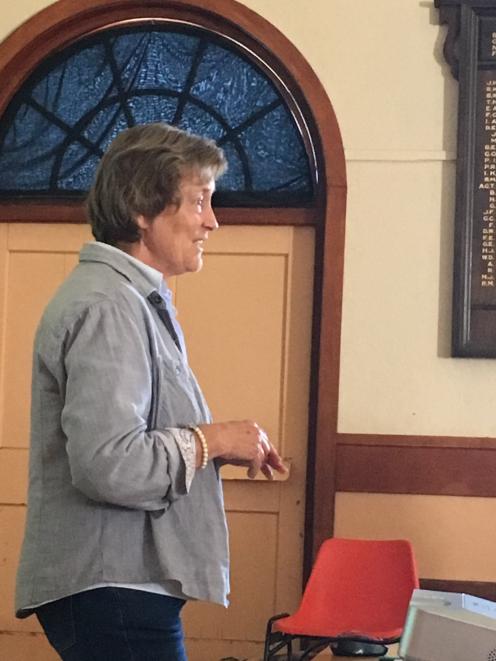
More than 50 people turned out at Waiau Hall on May 9 to hear Australian ecologist Dr Christine Jones, who took time out from her New Zealand speaking tour to share her insights on soil regeneration as farmers look for solutions as they recover from the November 2016 earthquake.
Following a two-hour workshop, Dr Jones, invited to Waiau by the Post Quake Farming Group, joined farmers on a visit to quake-damaged farmland on Inland Kaikoura Rd.
Dr Jones said she advocated moving away from ''simplified pastures where ryegrass and clover mixes predominate'' supported by non-organic nitrogen.
''There's a lot of money being spent on inputs and profits aren't increasing correspondingly,'' she said.
''What I would like to see is a change in grazing management, so we've got better utilisation of sunshine that's shining on us today and a better utilisation of light energy, so we've got better photosynthetic plant capacity.
''Whether you produce grain, milk, beef, lamb, wool, cotton, sugar, nuts, fruit, vegetables, flowers, hay, silage or timber, you are first and foremost a light farmer.''
She said this could be achieved by growing a diversity of plant and pasture species, planting between eight and 16 different seed varieties in one paddock.
''The more different kinds of plants we have above ground, the more different kinds of microbes we have below ground.
''If we get our diversity right, managed appropriately, we could have far more top soil and we could store far more carbon in our soil than we could ever do planting one billion trees, and it's going to have so many other flow-on benefits for farming communities.''
Flow-on benefits included more money in farmers' pockets, cleaning up waterways and improving human health with more nutritious foods.
She said she recommended using a biological fertiliser rather than non-organic nitrogen, as plants only absorbed between 10 and 40% of the nitrogen, leaving the rest in the soil, which was not only prone to leaching but could kill the microbes in the soil.
She said she advised farmers to wean their properties off nitrogen, by applying 20% less in the first year, then 30% less in the second year and a further 50% in the third year, rather than ''going cold turkey''.
Superphosphate is commonly applied to paddocks on New Zealand farms, but Dr Jones said ''only 10% to 15% of applied phosphate fertiliser is taken up by the plants in the year of the application''.
''The remaining 85% to 90% is fixed in the soil and is not directly available to plants,'' she said.
''It creates a lazy plant because it doesn't need to do the things it's supposed to do and can lead to mineral deficiencies in the animals grazing on the pasture.''
-By David Hill













